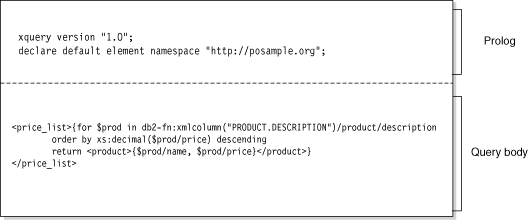Introduction to XQuery
XQuery is a functional programming language that was designed by the World Wide Web Consortium (W3C) to meet specific requirements for querying and modifying XML data.
Unlike relational data, which is predictable and has a regular structure, XML data is highly variable. XML data is often unpredictable, sparse, and self-describing.
Because the structure of XML data is unpredictable, the queries that you need to perform on XML data often differ from typical relational queries. The XQuery language provides the flexibility required to perform these kinds of operations. For example, you might need to use the XQuery language to perform the following operations:
- Search XML data for objects that are at unknown levels of the hierarchy.
- Perform structural transformations on the data (for example, you might want to invert a hierarchy).
- Return results that have mixed types.
- Update existing XML data.
Components of an XQuery query
In XQuery, expressions are the main building blocks of a query. Expressions can be nested and form the body of a query. A query can also have a prolog before this body. The prolog contains a series of declarations that define the processing environment for the query. The query body consists of an expression that defines the result of the query. This expression can be composed of multiple XQuery expressions that are combined using operators or keywords.
